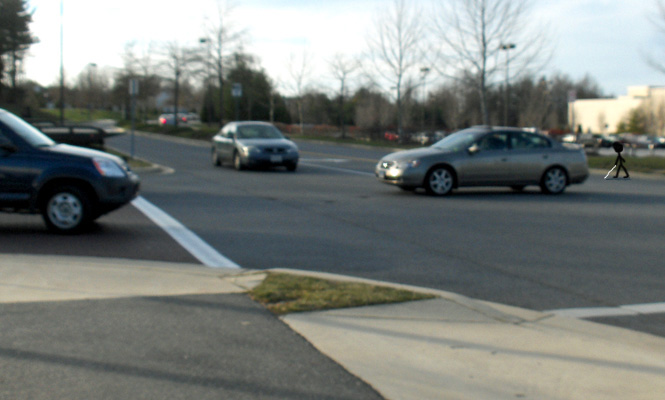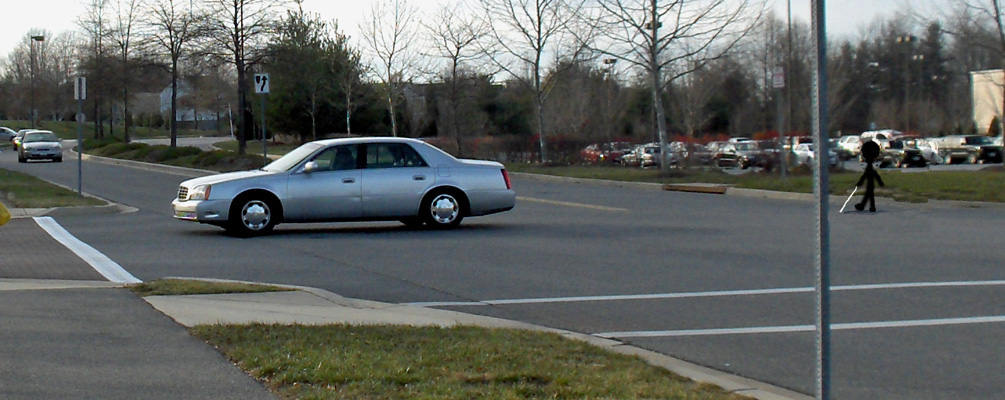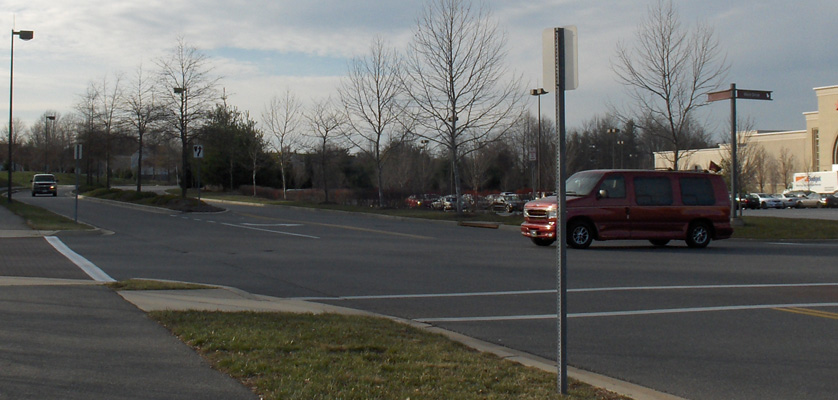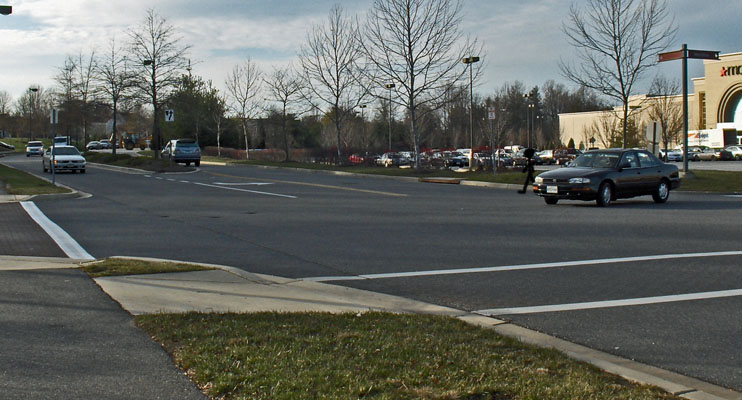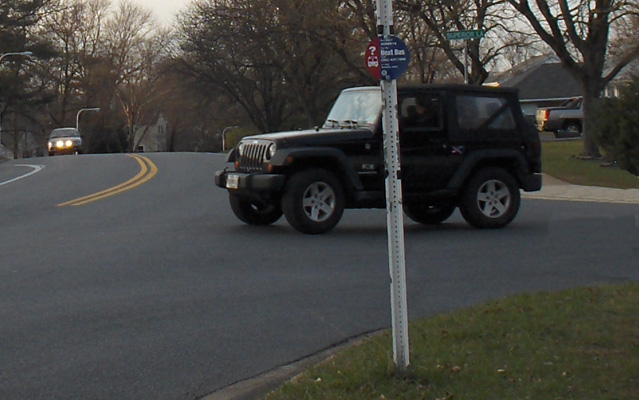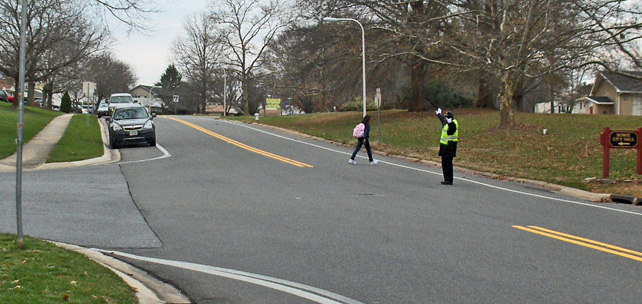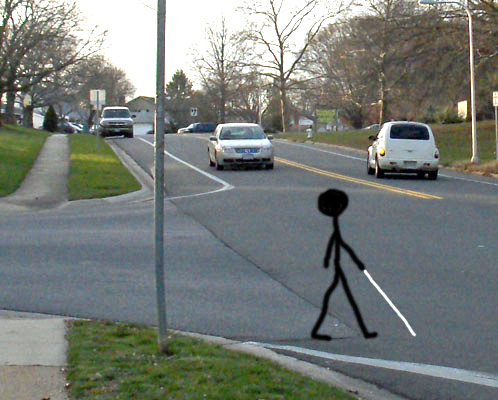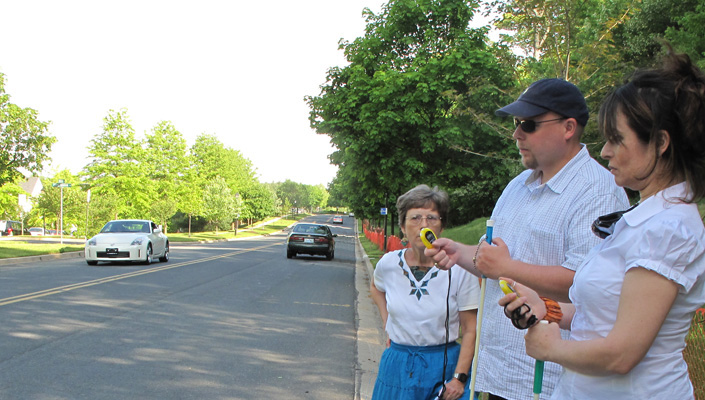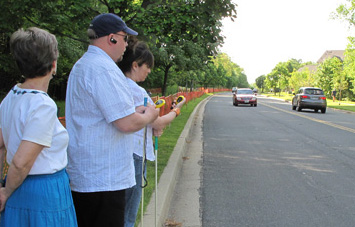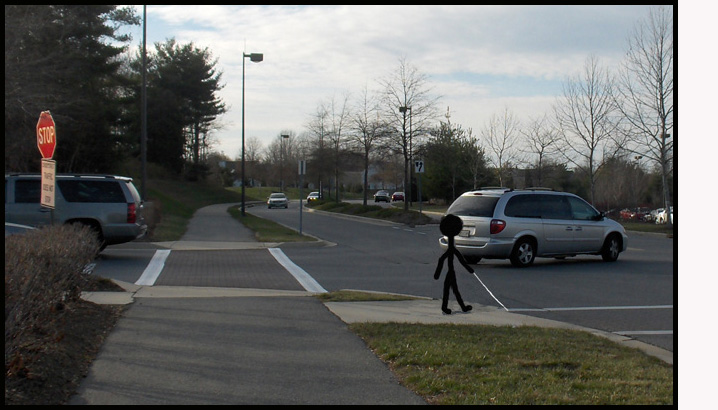
Suppose you are crossing a street that has no stop sign,
but there is a stop sign for traffic on the street beside you (the "parallel street").
This unreliable strategy suggests that you
(as shown in the photo to the left), you start to cross, using that vehicle
as a "buffer" between you and the cars on the street you are crossing.
The erroneous assumptions with this strategy are that if a driver who is waiting at a stop sign decides it is clear enough to cross the intersection and go straight or turn left, it is also clear for a pedestrian to cross, and the vehicle will stay in the intersection long enough to provide a "buffer" against the traffic while the pedestrian crosses. These assumptions are NOT valid.
This strategy:
- does not assure enough clearance time to cross.
- Vehicles travel much faster than pedestrians and need much less clearance time.
So, knowing that there is probably enough clearance time for a car to go through the intersection does not mean there is enough time for a pedestrian to cross.
- Vehicles that cross streets from stop signs do not stay in the intersection for more than a few seconds.
That is not long enough to provide the average pedestrian with a buffer for crossing more than the first lane.
- Even though the parallel vehicle does not provide a buffer, it CAN block the other drivers' view of any pedestrians who start crossing near it.
can make it difficult or impossible to hear the traffic on the street being crossed.
- The sound of any vehicle beside you can mask the sound of vehicles approaching on the street you want to cross.
Research verifies that when the level of ambient or extraneous noise increases, our ability to hear approaching vehicles decreases dramatically (Wall Emerson & Sauerburger, 2008).
